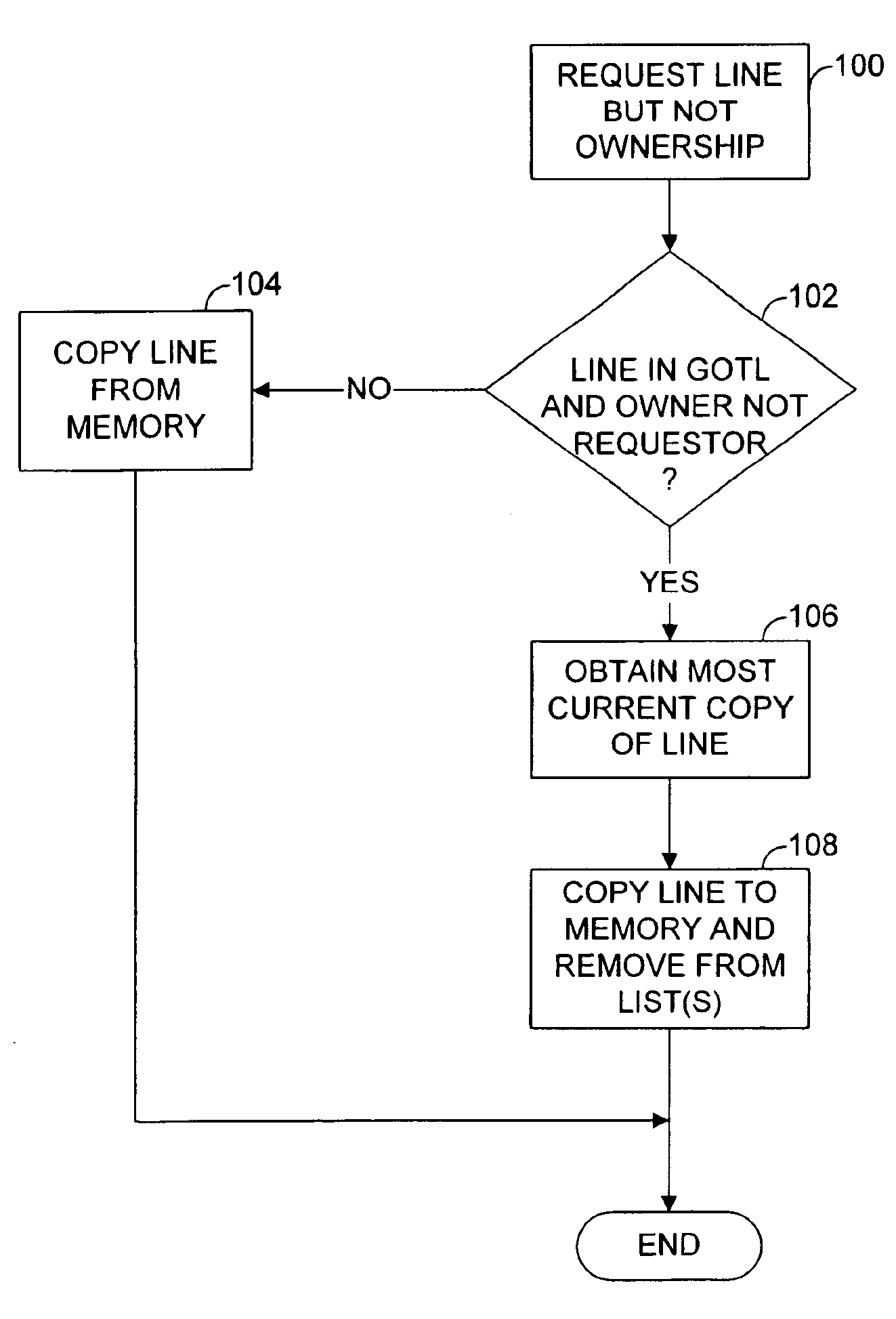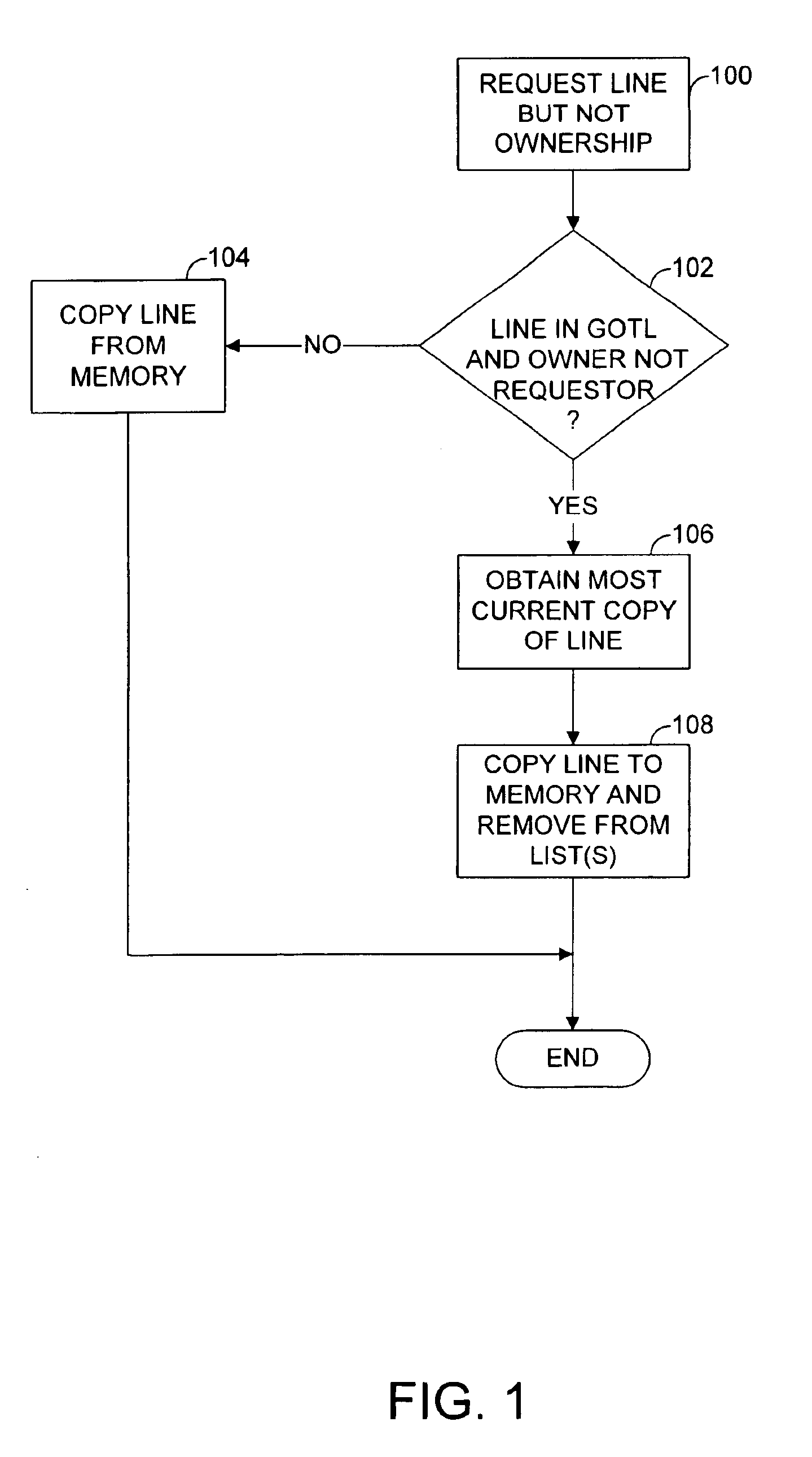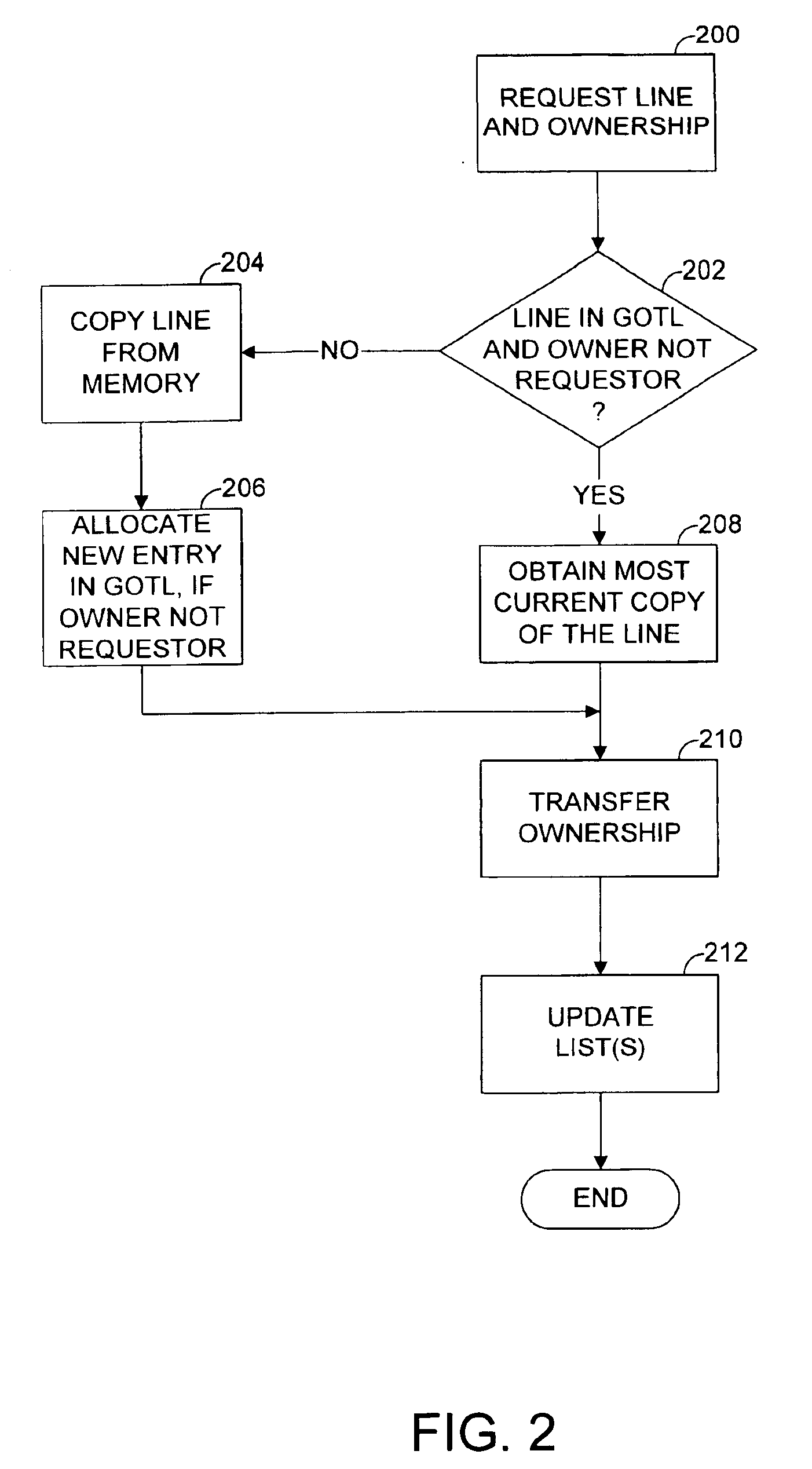Cache coherence protocol for a multiple bus multiprocessor system
a multi-bus, cache memory technology, applied in the field of computer systems, can solve the problems of only potentially dirty corresponding lines, and achieve the effect of improving performan
- Summary
- Abstract
- Description
- Claims
- Application Information
AI Technical Summary
Benefits of technology
Problems solved by technology
Method used
Image
Examples
Embodiment Construction
For any cache coherence protocol, if a requested line is not owned (dirty or potentially dirty), then any copy, and in particular, the copy in main memory, is sufficient. If the line could possibly be made dirty, then ownership must be transferred from the current owner, if any, to the requesting device. If the line is already dirty, then the most current copy must be returned to the requestor, and ownership must be transferred from the current owner to the requesting device. Accordingly, whether or not a line is owned by a cache is an essential piece of information needed for coherence in a multiple cache system. Consider a system in which cached lines have only two metastates for purposes of coherence: owned or shareable. All shareable cache lines are not owned by any device. All owned cache lines are potentially modifiable. If a device has access to a list of owned lines and their owners, then the device effectively knows all that is absolutely required to be known about the stat...
PUM
 Login to View More
Login to View More Abstract
Description
Claims
Application Information
 Login to View More
Login to View More - R&D
- Intellectual Property
- Life Sciences
- Materials
- Tech Scout
- Unparalleled Data Quality
- Higher Quality Content
- 60% Fewer Hallucinations
Browse by: Latest US Patents, China's latest patents, Technical Efficacy Thesaurus, Application Domain, Technology Topic, Popular Technical Reports.
© 2025 PatSnap. All rights reserved.Legal|Privacy policy|Modern Slavery Act Transparency Statement|Sitemap|About US| Contact US: help@patsnap.com



